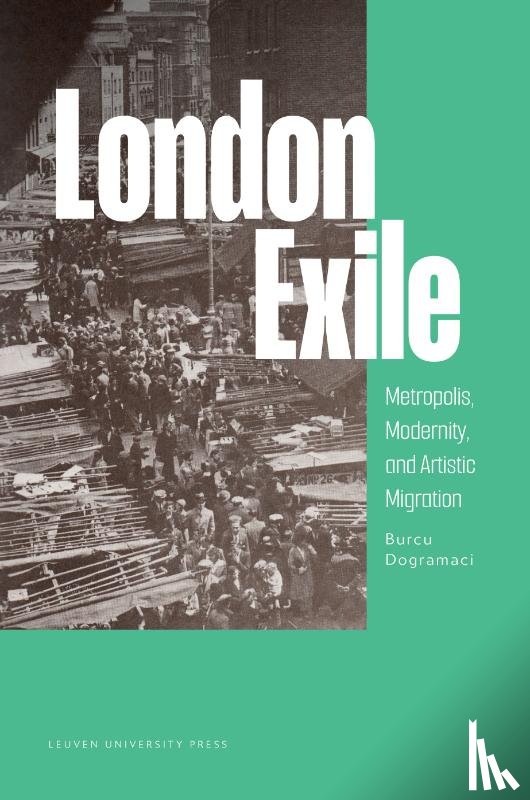Omschrijving
A new approach to modern art shaped by exile and migration. In the 1930s and 1940s, London was a metropolis of artistic exile and a place of refuge from Nazi persecution. London Exile is the first book to look at the British capital as a sanctuary for modern artists. The city presented its new arrivals with opportunities and challenges: exiles established galleries, founded publishing houses and magazines, collaborated with local artists, organised exhibitions, published their work, and built networks. Artistic and theoretical production flourished in close dialogue with urban space.
This volume sheds light on how the arrival of exiles transformed London’s art scene and, conversely, how the experience of displacement and the city shaped the work of émigrés in fields such as art, architecture, and photography. London Exile brings art history, urban studies, and exile studies into a vibrant dialogue and contributes to a new understanding of the history of modern art.
Burcu Dogramaci is professor of art history and director of the Käte Hamburger Research Centre global dis:connect at the Ludwig-Maximilians-Universität München. In the 1930s and 1940s, London was a metropolis of artistic exile and a place of refuge from Nazi persecution. *London Exile* is the first book to look at the British capital as a sanctuary for modern artists. The city presented its new arrivals with opportunities and challenges: exiles established galleries, founded publishing houses and magazines, collaborated with local artists, organised exhibitions, published their work, and built networks. Artistic and theoretical production flourished in close dialogue with urban space.
This volume sheds light on how the arrival of exiles transformed London’s art scene and, conversely, how the experience of displacement and the city shaped the work of émigrés in fields such as art, architecture, and photography. *London Exile* brings art history, urban studies, and exile studies into a vibrant dialogue and contributes to a new understanding of the history of modern art. 1. Prologue: London, Metropolis of Artistic Exile 9
2. Arrival and Orientation: Address Books, Street Maps, and
Undergrounds 23
3. Neighbourhoods, Streets, and Houses: Exile History as Urban
History 41
4. Gendered London: Gender, Sexuality, and Exile 65
5. Émigrés Build for Émigrés 83
6. Transplanted Objects: Sigmund Freud’s Collection and Chair 103
7. Sculpture, Modernity, and Exile: Jussuf Abbo in London 121
8. From Bauhaus to the Thames: Textile Designs by Margaret
Leischner 143
9. In the Blitz: Helmut Gernheim’s Photographs of National
Monuments 161
10. Portrait of a City: Streets and Faces of Exile 179
11. London Zoo: Animal, City, and Exile 203
12. Storytelling in Pictures: Stefan Lorant and the Picture Post
Photographers 249
13. Reading Exile: Publishers and Books as Multipliers 281
14. Immortal Portraits: Exile, London, and the Historiography of
Early Photography 305
15. Back to History: Ludwig Meidner and the British Caricature 325
16. Pencil as Weapon: Richard Ziegler, Walter Trier,
and Die Zeitung 337
17. Exhibited Exile: Exhibitions by and with Émigrés 361
18. Show It: Galleries as Places of Distribution of Modernity
in Exile 381
19. Allies inside Germany and English Art and the Mediterranean:
Exhibitions in and outside London 413
20. Beyond London: Rosa Schapire, Expressionism,
and/in Leicester 441
21. Epilogue: Self-descriptions of Exile – A Look Back 463
Afterword and Acknowledgements 475
Notes 479
Bibliography 537
Index of Persons, Institutions, and Periodicals 589


